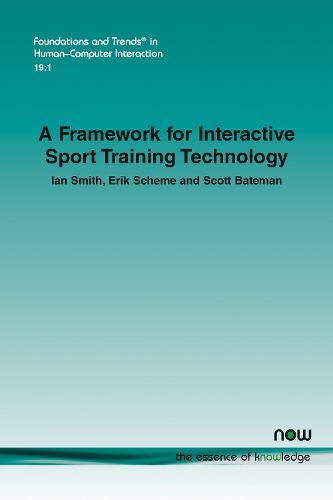Readings Newsletter
Become a Readings Member to make your shopping experience even easier.
Sign in or sign up for free!
You’re not far away from qualifying for FREE standard shipping within Australia
You’ve qualified for FREE standard shipping within Australia
The cart is loading…






This title is printed to order. This book may have been self-published. If so, we cannot guarantee the quality of the content. In the main most books will have gone through the editing process however some may not. We therefore suggest that you be aware of this before ordering this book. If in doubt check either the author or publisher’s details as we are unable to accept any returns unless they are faulty. Please contact us if you have any questions.
Participation in organized sport has many physical, mental, and social benefits, but there are a variety of obstacles in joining and continued participation, including access to adequate coaching, equipment, and training facilities. These obstacles lead to inequitable access to high-quality and engaging training, which is a critical problem because adequate training is the main gateway to learning and participating in a sport. Increasingly, technology is used to augment sports training by improving its effectiveness, accessibility, and/or making it more engaging. However, the vast and disparate number of fields contributing to these advancements make it difficult to comprehensively understand technology's current and potential impact on sport training.
This monograph synthesizes work across fields, including human-computer interaction, computer science, sport science, engineering, psychology, and health sciences, into a classification of research and findings regarding interactive sport training technology organized around four characterizing dimensions: 1) Why augment sport? (the goal); 2) Which sport skill is being supported? (the target); 3) Which training method is used? (the method); 4) How is training augmented (the form). From this synthesis, gaps in training technology research are identified and a framework that can provide a common base for the design and creation of future interactive technologies for sport training is proposed.
$9.00 standard shipping within Australia
FREE standard shipping within Australia for orders over $100.00
Express & International shipping calculated at checkout
This title is printed to order. This book may have been self-published. If so, we cannot guarantee the quality of the content. In the main most books will have gone through the editing process however some may not. We therefore suggest that you be aware of this before ordering this book. If in doubt check either the author or publisher’s details as we are unable to accept any returns unless they are faulty. Please contact us if you have any questions.
Participation in organized sport has many physical, mental, and social benefits, but there are a variety of obstacles in joining and continued participation, including access to adequate coaching, equipment, and training facilities. These obstacles lead to inequitable access to high-quality and engaging training, which is a critical problem because adequate training is the main gateway to learning and participating in a sport. Increasingly, technology is used to augment sports training by improving its effectiveness, accessibility, and/or making it more engaging. However, the vast and disparate number of fields contributing to these advancements make it difficult to comprehensively understand technology's current and potential impact on sport training.
This monograph synthesizes work across fields, including human-computer interaction, computer science, sport science, engineering, psychology, and health sciences, into a classification of research and findings regarding interactive sport training technology organized around four characterizing dimensions: 1) Why augment sport? (the goal); 2) Which sport skill is being supported? (the target); 3) Which training method is used? (the method); 4) How is training augmented (the form). From this synthesis, gaps in training technology research are identified and a framework that can provide a common base for the design and creation of future interactive technologies for sport training is proposed.